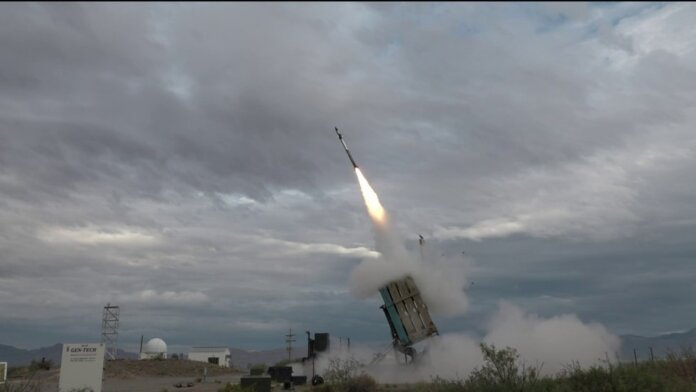The RTX (formerly Raytheon)- Rafael team formed in 2020 have continued to capitalize on their ground-based air defence collaboration. The most recent being the US Marine Corps announcement of its intent to acquire three batteries of the Iron Dome short range interceptor which the Marines refer to as the Medium-Range Intercept Capability (MRIC).
LtCol Matthew Beck, product manager for A-MANPADS/MRIC explained “MRIC is a middle-tier acquisition rapid prototyping effort, serving as a short-to-medium range air defence system that fills a crucial capability gap in the Indo-Pacific’s contested theatre. Although it was primarily designed for cruise missile MRIC also boasts capabilities against other airborne threats”.
The tactical truck mounted MRIC uses the Tamir interceptor to address targets at ranges from 4 km to 70 km. The Iron Dome has been fielded and successfully employed in Israel since 2011 while the US Army has two batteries form a US Congressionally directed procurement. In May 2023 US Army Lt. Gen. Daniel Karbler testified that one of these is ready for deployment (Guam has been suggested), and the other is wrapping up its training. Iron Dome is able to protect an area of around 150 square kilometres making it suited to defending a specific area.
This additional Iron Dome/MRIC fielding is complemented by successes by the US/Israeli team in introducing its SkyCeptor interceptors for medium range ground air defence. Using the Mach 7.5 speed Stunner missile the system is able to engage missiles and aerial threats at ranges of 40 to 300 km. SkyCeptor is in service with Israel (called David’s Sling) and recently selected for fielding by Finland.
Creating further opportunity for the team is that the SkyCeptor’s Stunner effector is compatible with the PAC-3 Patriot. RTX has integrated it into Patriot thereby expanding the capabilities of the Patriot. The interceptor designed for “plug-and-play” insertion into the Patriot as well as other air defence systems.

Stunner is equipped with electro-optical/infrared sensors, an all-weather radar seeker, and a multiple-pulse rocket motor. A two-stage missile it is powered by a three-pulse solid propellant motor with the final increasing the speed before the final intercept. This is critical as Stunner has no warhead (differing from Iron Dome’s Tamir interceptor) instead relies on direct impact to destroy the target.
With integration of SkyCeptor’s effector into the Patriot the potential for its inclusion into the batteries of any of the eighteen countries which currently field Patriot offers a distinct opportunity. In fact, in May 2022 the Romania Romanian state-owned defence firm Romarm’s subsidiary Electromecanica Ploiesti announced its agreement with RTX to manufacture SkyCeptor interceptor missiles for the Patriot beginning in 2026. Further, Japan’s Self Defence Force, which had been exploring SkyCeptor recently indicated its intent to move forward.
In addition, that the team intents to propose the SkyCeptor air defence system for Australia’s medium-range surface-to-air missile (SAM) program was confirmed by a Rafael executive at the Avalon Airshow in Australia held in February.
The Iron Dome/MRIC, also referred to as SkyHunter, and the ability to integrate SkyCeptor with Patriot confirm the availability of ground-based air defence capabilities suited to addressing current and future threats. Expanding the abilities of currently fielded air defence systems like Patriot, in particular, as offered by RTX and Rafael offers a highly cost effective and readily available option.
by Stephen W. Miller













